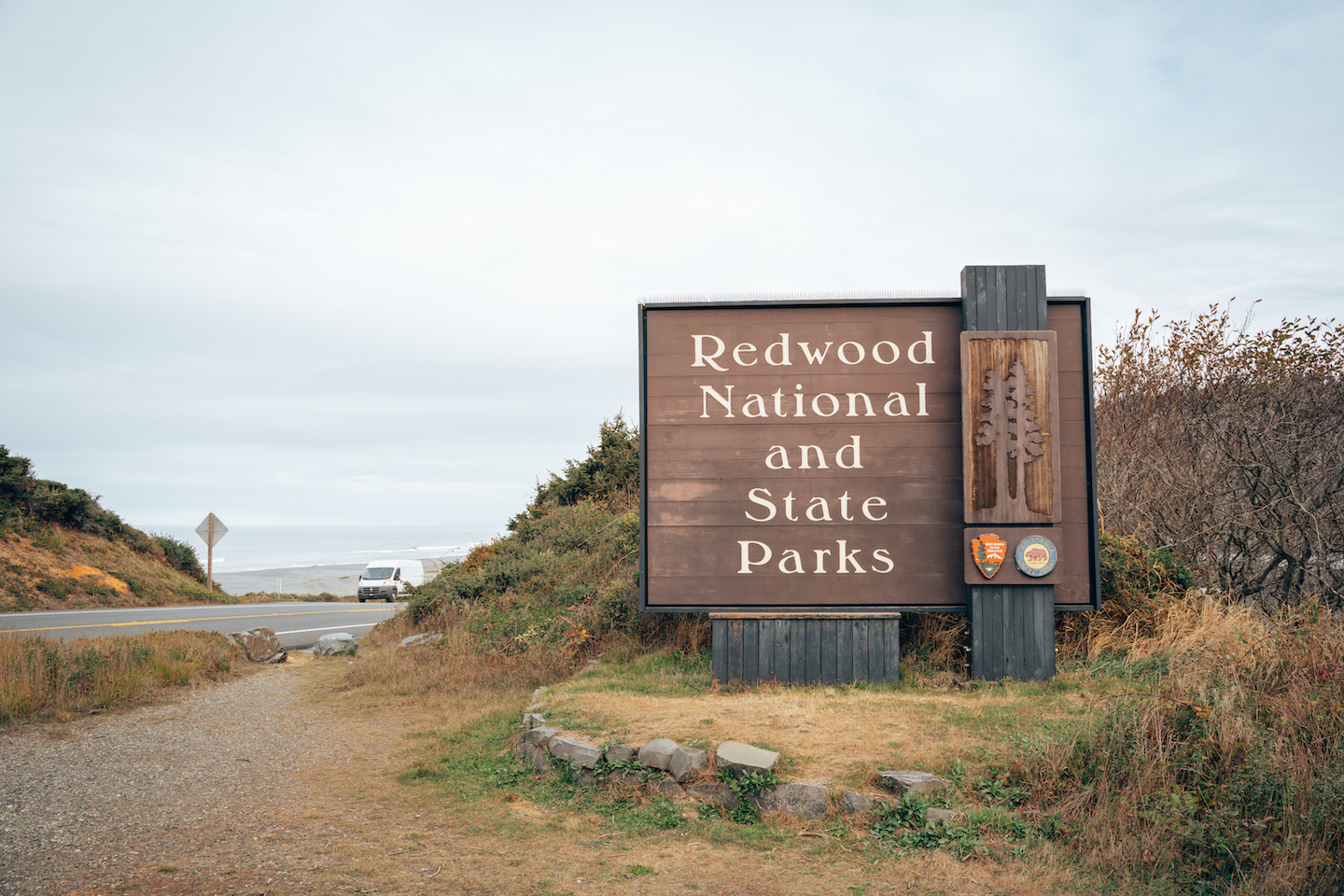
Nestled along the misty coastline of Northern California, Redwood National and State Parks are a sanctuary of towering ancient trees, lush ferns, and breathtaking natural beauty. Home to the tallest trees on Earth, this UNESCO World Heritage Site offers visitors a chance to step into a realm where time slows and nature takes center stage. Whether you’re dreaming of wandering through sun-dappled forest trails, spotting Roosevelt elk in grassy meadows, or gazing at rugged coastal vistas, planning your visit to these iconic parks ensures you make the most of this enchanting experience. In this guide, we’ll break down everything you need to know—from the best trails and scenic spots to practical tips for an unforgettable trip.
- MAP OF REDWOOD NATIONAL PARK
- REDWOOD NATIONAL AND STATE PARKS: HOW TO PLAN YOUR VISIT
- ABOUT REDWOOD NATIONAL AND STATE PARKS
- REDWOOD NATIONAL PARK WEATHER
- BEST TIME TO VISIT REDWOOD NATIONAL AND STATE PARKS
- ENTRY TO REDWOOD NATIONAL & STATE PARKS
- WHAT TO BRING TO REDWOOD NATIONAL AND STATE PARKS
- WHAT TO WATCH OUT FOR
- HOW MUCH TIME TO PLAN FOR
- ARE REDWOOD NATIONAL AND STATE PARKS DOG FRIENDLY?
- THINGS TO DO IN REDWOOD NATIONAL PARK
- PLACES TO STAY IN THE REDWOOD NATIONAL PARK
- OTHER ARTICLES ABOUT REDWOOD NATIONAL PARK
- MAP OF CALIFORNIA
- REDWOOD NATIONAL AND STATE PARKS: HOW TO PLAN YOUR VISIT
MAP OF REDWOOD NATIONAL PARK
Redwood National and State Parks are located in Northern California along the Pacific Coast near the Oregon border. This sprawling area includes Del Norte, Jedediah Smith, and Prairie Creek Redwoods State Parks. The region stretches across rugged coastline and lush forests, offering diverse landscapes and unmatched natural beauty. Major access points include Crescent City, Klamath, and Orick, all reachable via U.S. Route 101.
Check out our map below to not only see exactly where Redwood National Park and State Parks, and these activities are located, but over 500 other points of interest in California as well!
REDWOOD NATIONAL AND STATE PARKS: HOW TO PLAN YOUR VISIT
ABOUT REDWOOD NATIONAL AND STATE PARKS
One of the most unique things about Redwood National and State Parks, besides the towering trees, is that the parks are managed through a unique partnership between the National Park Service and California State Parks. This collaboration began in 1994 to better protect the region’s ancient redwood forests and diverse ecosystems. Together, the parks encompass Redwood National Park and three California State Parks: Jedediah Smith Redwoods State Park, Del Norte Coast Redwoods State Park, and Prairie Creek Redwoods State Park. By sharing resources and expertise, the agencies work to preserve the towering trees, wildlife habitats, and cultural heritage. Visitors experience a seamless blend of state and federal lands, with unified trails, campgrounds, and visitor centers.
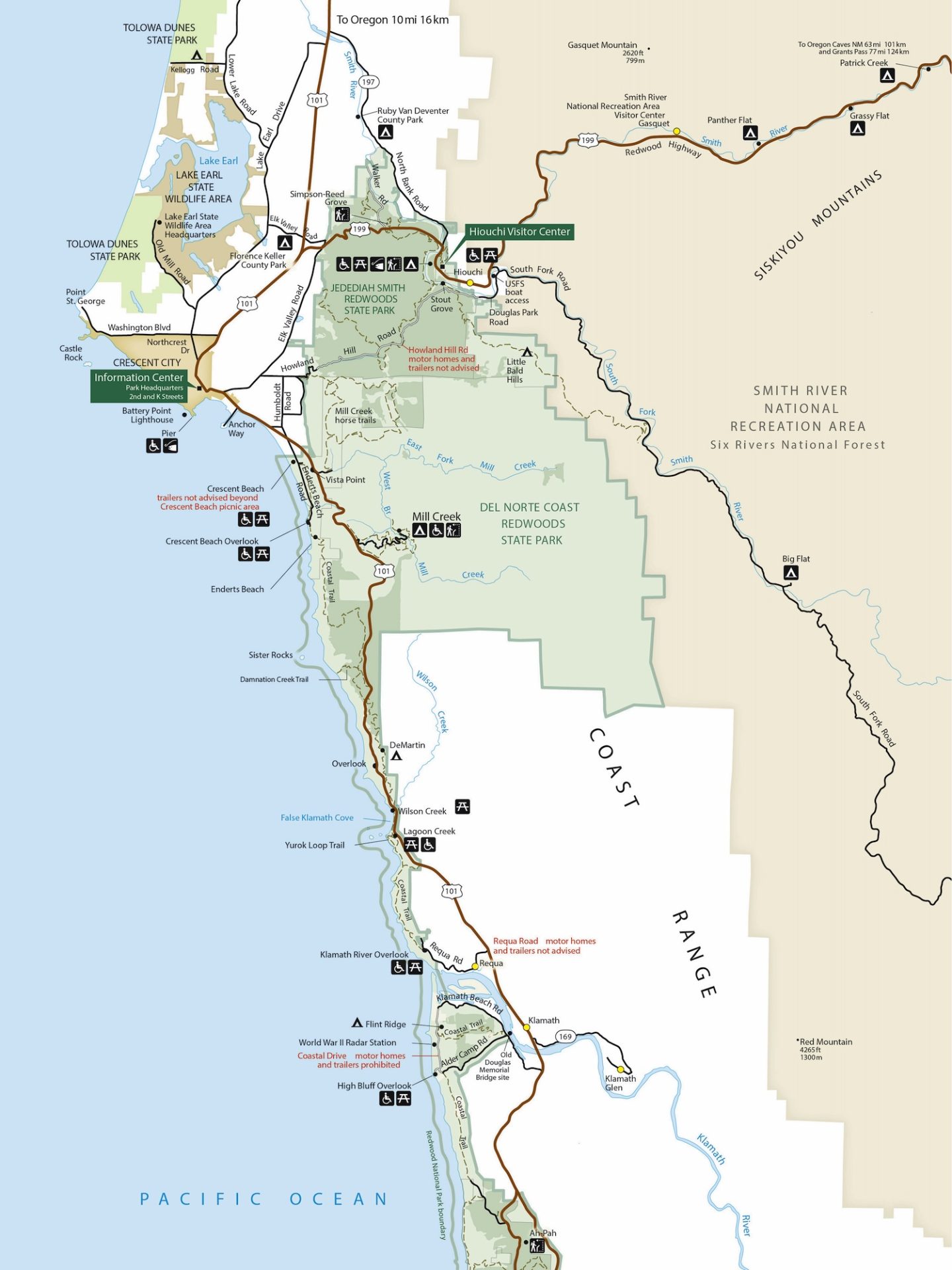
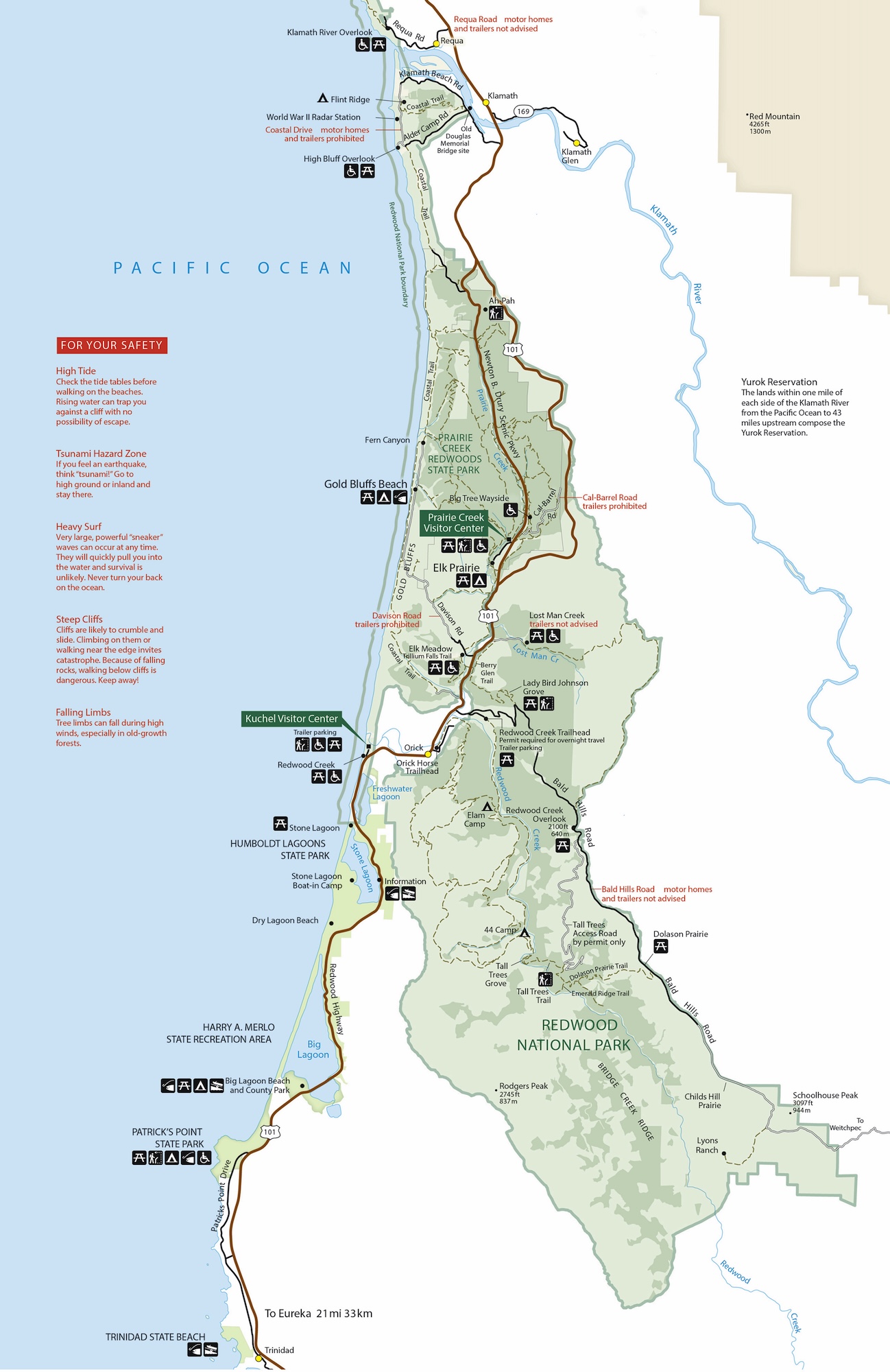
The 33rd National Park, Redwood National Park was designated in 1968, and is combined uniquely in partnership with California Redwood State Parks (there are actually four parks total). Each of the parks are known for their giant Coastal Redwood trees which are said to be the tallest in the world. Some of these incredible giants measure over 350 ft tall. For those keeping track, the Statue of Liberty is 305 ft tall.
In addition to their size, these trees are quite incredible for other reasons as well! Redwoods first appeared over 240 million years during the time of dinosaurs, they have their own ecosystems of worms, spiders and other little critters living amongst their canopy due to their foliage falling each year, and settling on branches, decomposing in to “canopy soil”. The redwoods and surrounding plant life rely heavily on the fog in the area, as it is caught by the foliage and then condenses in to liquid dripping down on to the ground, further feeding these giants and other plants. Really shows how unique and incredible plant life can be.
REDWOOD NATIONAL PARK WEATHER
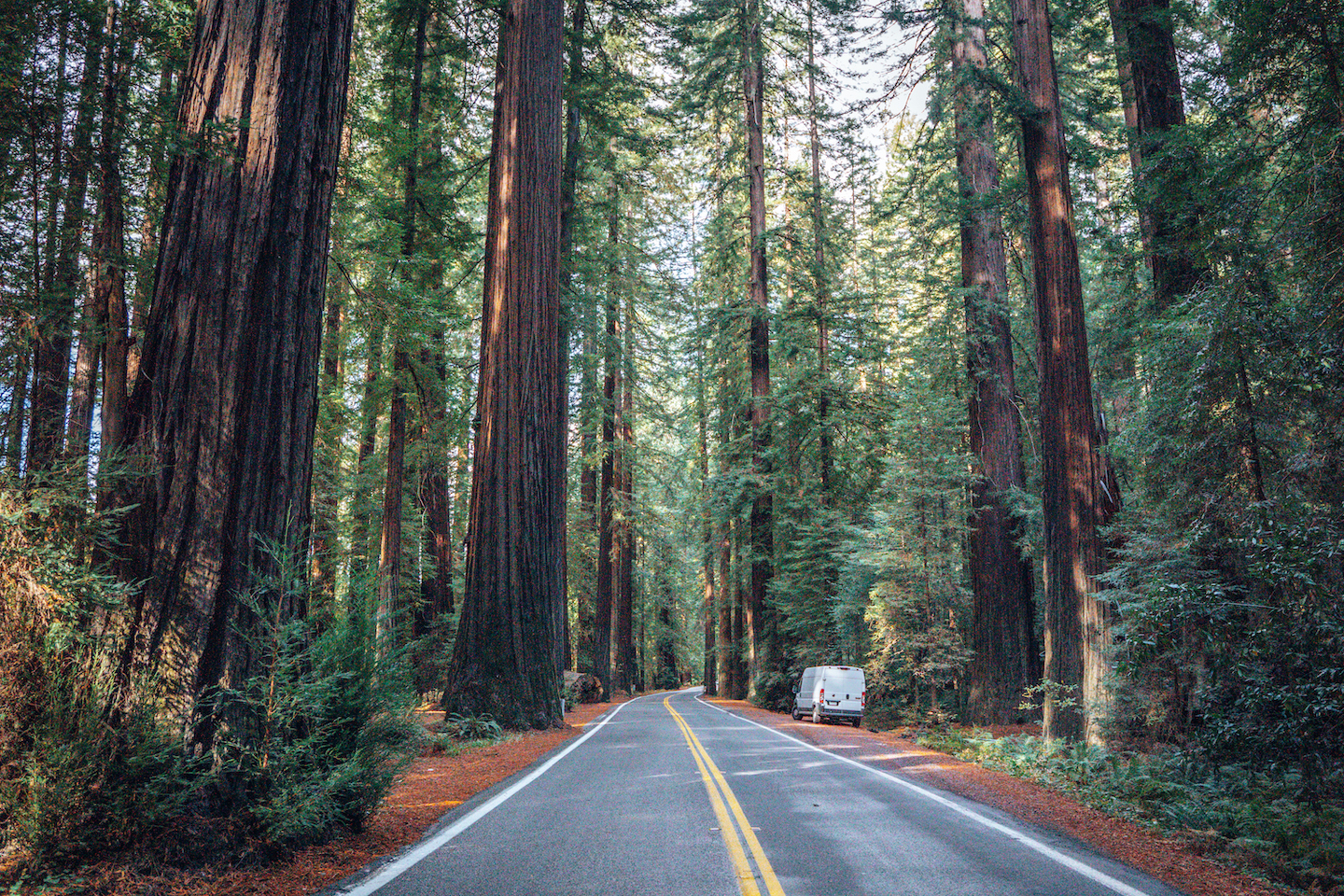
Redwood National Park experiences mild, wet winters and cool, dry summers. Coastal fog is common, especially during summer mornings. Temperatures typically range from 40°F to 65°F year-round, making it a pleasant destination in any season. Rainfall is heaviest between October and April, creating lush, green landscapes. Summer months are drier but still offer occasional drizzle or mist. Dress in layers to prepare for changing weather conditions throughout the day.
BEST TIME TO VISIT REDWOOD NATIONAL AND STATE PARKS
The best time to visit Redwood National and State Parks depends on your preferences and planned activities. Summer, from June to August, offers warm, dry weather with temperatures ranging from 50°F to 70°F, ideal for hiking and camping. Coastal fog is common in summer mornings but clears by afternoon. Fall, from September to October, brings fewer crowds and vibrant foliage, with cooler temperatures between 45°F and 65°F and occasional rain. Winter, from November to February, sees heavy rain and peaceful trails, with temperatures ranging from 40°F to 55°F. Spring, from March to May, features blooming wildflowers, fewer visitors, and mild weather, with temperatures typically between 45°F and 65°F. For fewer crowds, weekdays and early mornings are best.
ENTRY TO REDWOOD NATIONAL & STATE PARKS
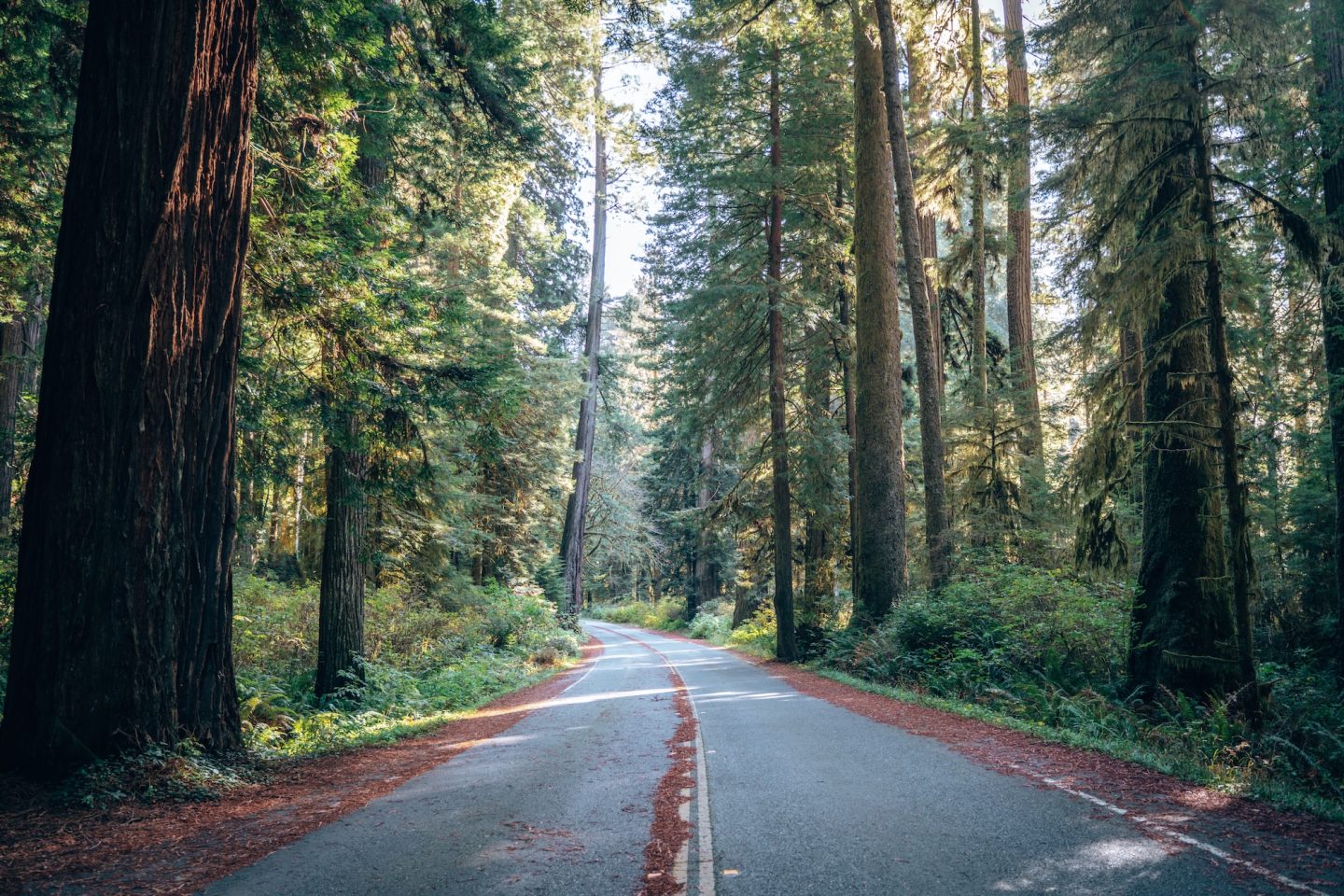
Unlike many of the National Parks, Redwood has no entrance station. Therefore entry in to all of the parks is free. That being said, there are a few places like Fern Canyon and Gold Bluff’s Beach, or the Tall Trees Trail that require reservations to access. If you’re anything like us, and love visiting National Parks, you may want to consider getting the America The Beautiful Pass. This pass gives you free annual entry to ALL National Parks in the U.S. for just $80. They do also have discounted Senior passes as well as free passes for current U.S. Military.
WHAT TO BRING TO REDWOOD NATIONAL AND STATE PARKS
Depending on the month and season you visit, it could change what you need to bring with you. But there are some general basics that we think are must-packs and will make your experience much more enjoyable!
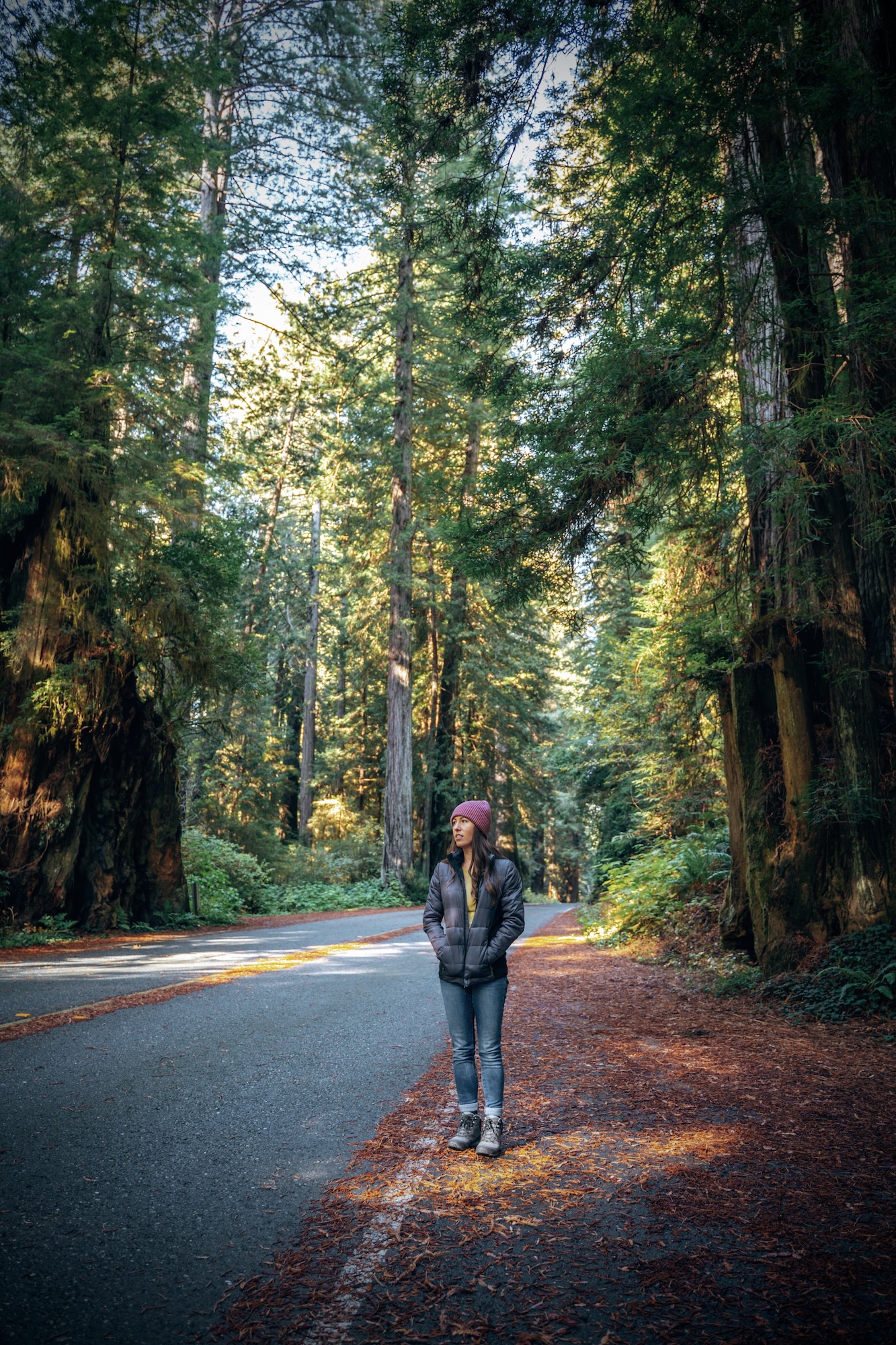

GEAR RECOMMENDATIONS
- Backpack / Daypack – Odds are you’re going to carry all of the below items in, so a good backpack or daypack like The North Face Recon is an absolute must!
- Water reservoir – For the longest time, we would pack both of our metal reusable water bottles in our daypacks, and not only did it add unnecessary weight, but it was also time consuming to stop and take our water bottles out of the backpack. We’ve since upgraded to the CamelBak Fusion 2L Reservoir, and it has been a game changer!
- Headlamps – Depending on how much time you spend on the hills, it could be dark out when you’re making your way back. That’s where headlamps come in handy. Our preferred and arguably the most popular, is the Black Diamond Spot 400.
- Hiking poles – Speaking of Black Diamond, they also make some of the best and most popular hiking and trekking poles. If you are someone who finds hiking to be easier with some extra stability support, then these are for you!
CLOTHING RECOMMENDATIONS
- Hiking boots – The type of footwear you wear, can literally make or break your hiking experience. We recommend a sturdy mid to high-ankle hiking boot like the Merrell Nova 3 due to some of the uneven rock and ground that you’ll be hiking on.
- Jackets & Layers – Layers are your friend. As you’re hiking around, your core temperature rises, and you’ll probably start feeling hot and sweaty. Then on the way back, the cooler temps as the sun goes down makes that moisture feel quite cool. So you’ll want moisture wicking layers like merino wool. Our personal favorites, are from Patagonia. Particularly their Capilene line.
- Socks – Speaking of merino wool, a good pair of merino wool socks will also go a long way in keeping your feet comfy, dry and let’s face it… Less smelly afterwards!
OTHER RECOMMENDATIONS
- Sun protection – Sun protection is crucial. Although we are recommending visiting when the sun is not at full force, it’s still incredibly important to bring proper sun protection for this park. We have found Sun Bum to be our go-to!
- Food & Snacks – Whether you’re a chronic snacker like Katy, or just the casual when necessary snacker like me, it’s always good to have something on-hand just in case. A little protein can also go a long way in making your hike more enjoyable! Eureka and Crescent City are the largest towns near the parks which are nearly 2 hours apart. So our biggest recommendation would be to do some grocery shopping and stock up on any food or beverages you’ll want before arriving at wherever you plan on staying.
WHAT TO WATCH OUT FOR
There is an enormous amount of beauty to see inside and around the parks. In addition to the beautiful redwoods, you might even be lucky enough to see some roaming elk. You’ll find a number of different prairies and meadows where you can pull over and watch elk feed and rest, like Elk Meadow just north of Orick.
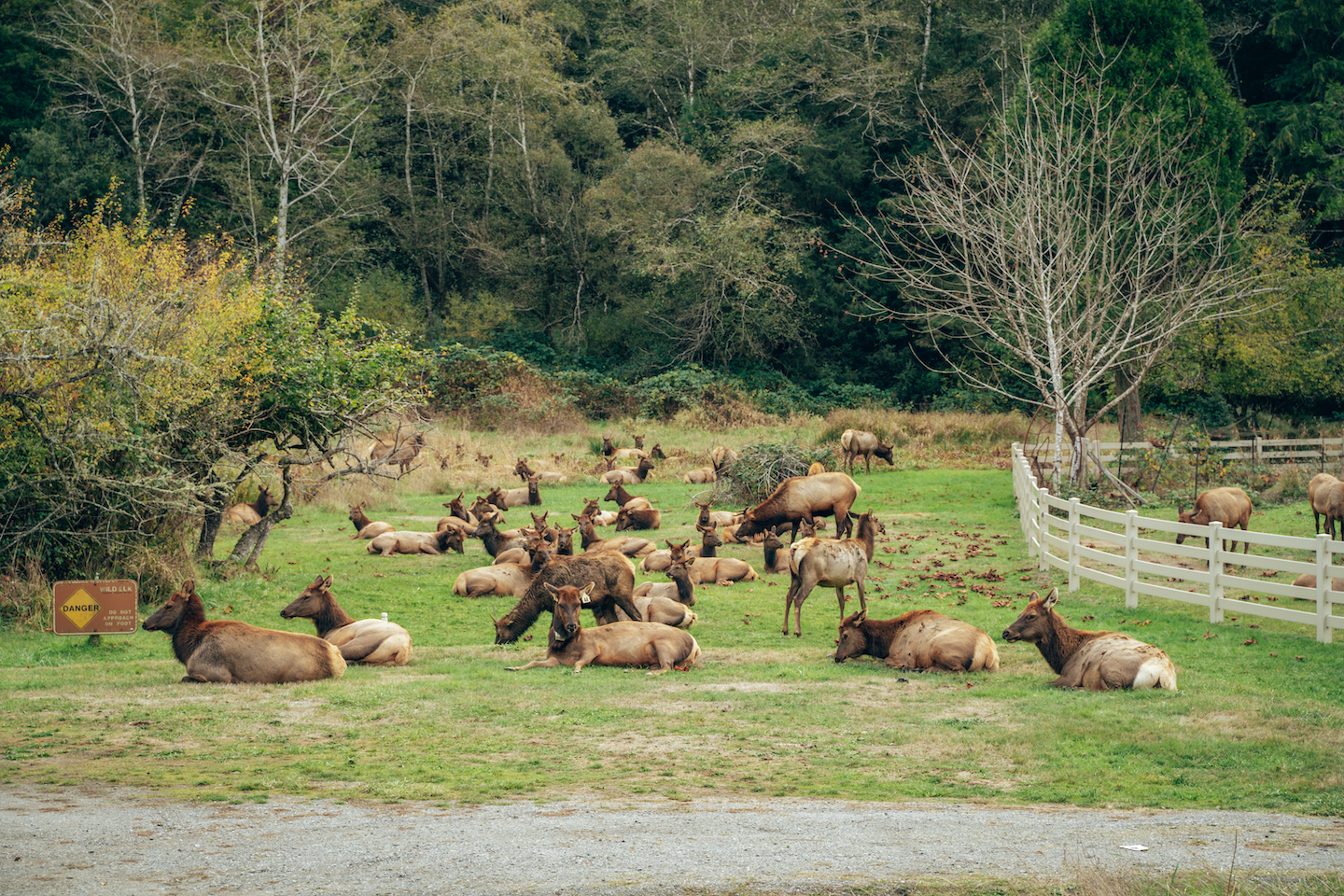
There are also a number of animals you may NOT want to pause to watch, like mountain lions, cougars, bobcats and black bear. While it’s unlikely that you’ll come across any of these will exploring, it’s good to be aware of them and to know what to do in the event you cross paths with any one of these.
Lastly, poison oak. If you are not familiar with poison oak or poison ivy, thank your lucky stars. I (Ryan) had a run-in with some poison oak this year and it is PAINFUL, and it is difficult to treat with ANYTHING over the counter. We’ll spare you the pain of any images of what poison oak can do, but if you’re curious, feel free to google it. But ye be warned. That being said, poison oak is a plant that is relatively common in California and difficult to spot unless you’re specifically looking for it. So might want to familiarize yourself.
For all things safety, check out the NPS Safety website to learn more about all of the above prior to your trip.
HOW MUCH TIME TO PLAN FOR
The amount of time you plan to spend in the parks, really depends on the amount and types of activities you’d like to do. Two to three days are ideal for exploring Redwood National and State Parks’ highlights, including trails, scenic drives, and beaches. One day allows for quick stops, like Lady Bird Johnson Grove and Newton B. Drury Scenic Parkway. Longer stays let you hike more trails, visit Fern Canyon, and enjoy wildlife viewing. Our recommendation though, three to four days is a perfect amount. This allows you one full day in each park, or some flex time to explore some of the other activities outside the parks.
ARE REDWOOD NATIONAL AND STATE PARKS DOG FRIENDLY?
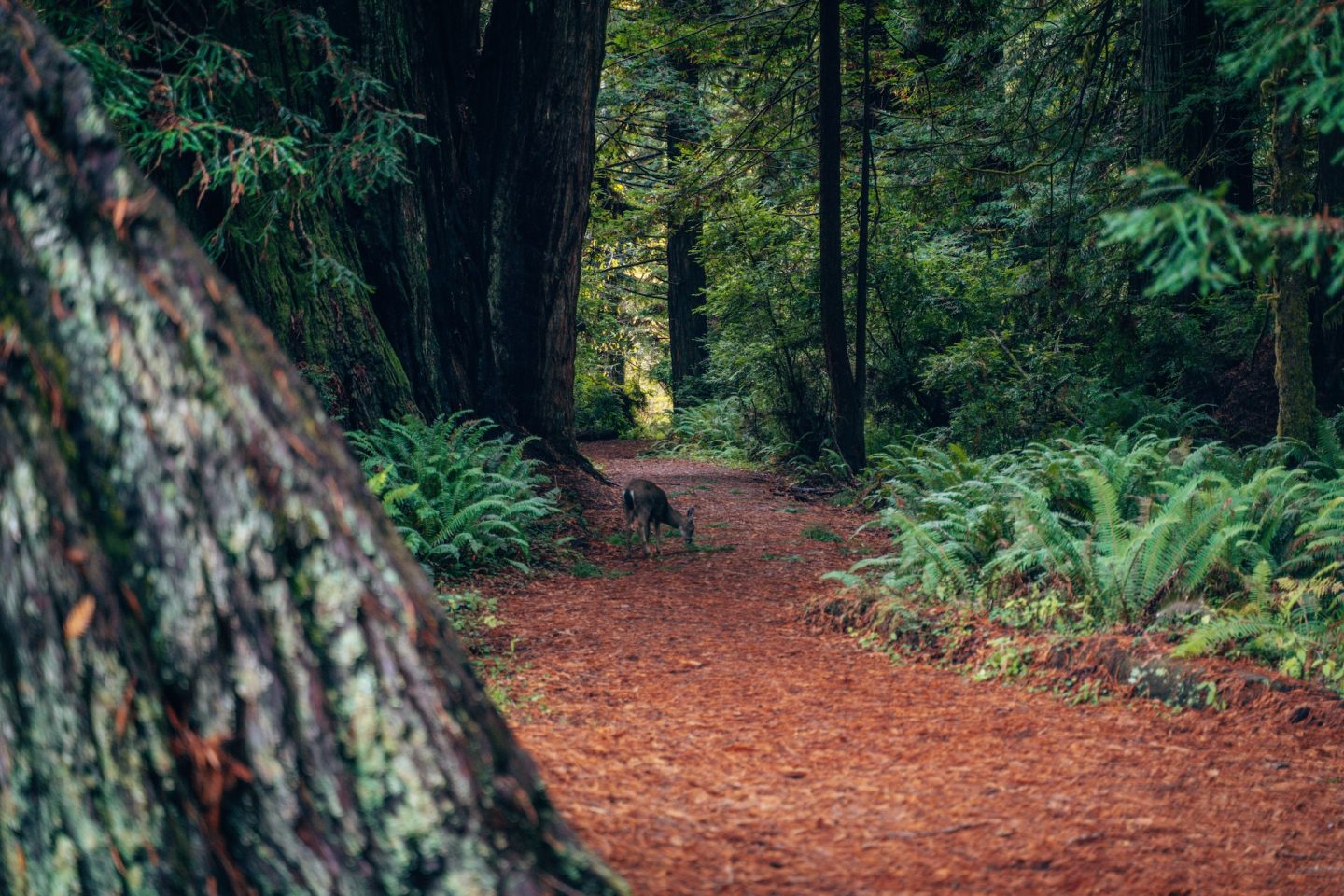
Redwood National and State Parks are partially dog-friendly, but pets are restricted to developed areas, campgrounds, and some beaches. Dogs must always be leashed, and trails are generally off-limits to protect wildlife and fragile ecosystems. Popular dog-friendly areas include Crescent Beach and Gold Bluffs Beach, offering scenic coastal walks. Plan ahead to ensure your furry friend can join in safely. Check the NPS website to get all the full details!
THINGS TO DO IN REDWOOD NATIONAL PARK
Redwood National and State Parks offer diverse activities, from hiking among towering trees to exploring scenic beaches and rugged coastline. Popular trails include the Lady Bird Johnson Grove and Tall Trees Grove, showcasing stunning redwoods. Scenic drives like the Newton B. Drury Parkway provide breathtaking views without leaving your car. Wildlife enthusiasts can spot elk, seals, and diverse bird species throughout the parks. For a unique experience, visit Fern Canyon, known for lush, moss-covered walls featured in Jurassic Park. Camping, picnicking, and tidepooling are also great ways to enjoy the parks’ natural beauty.
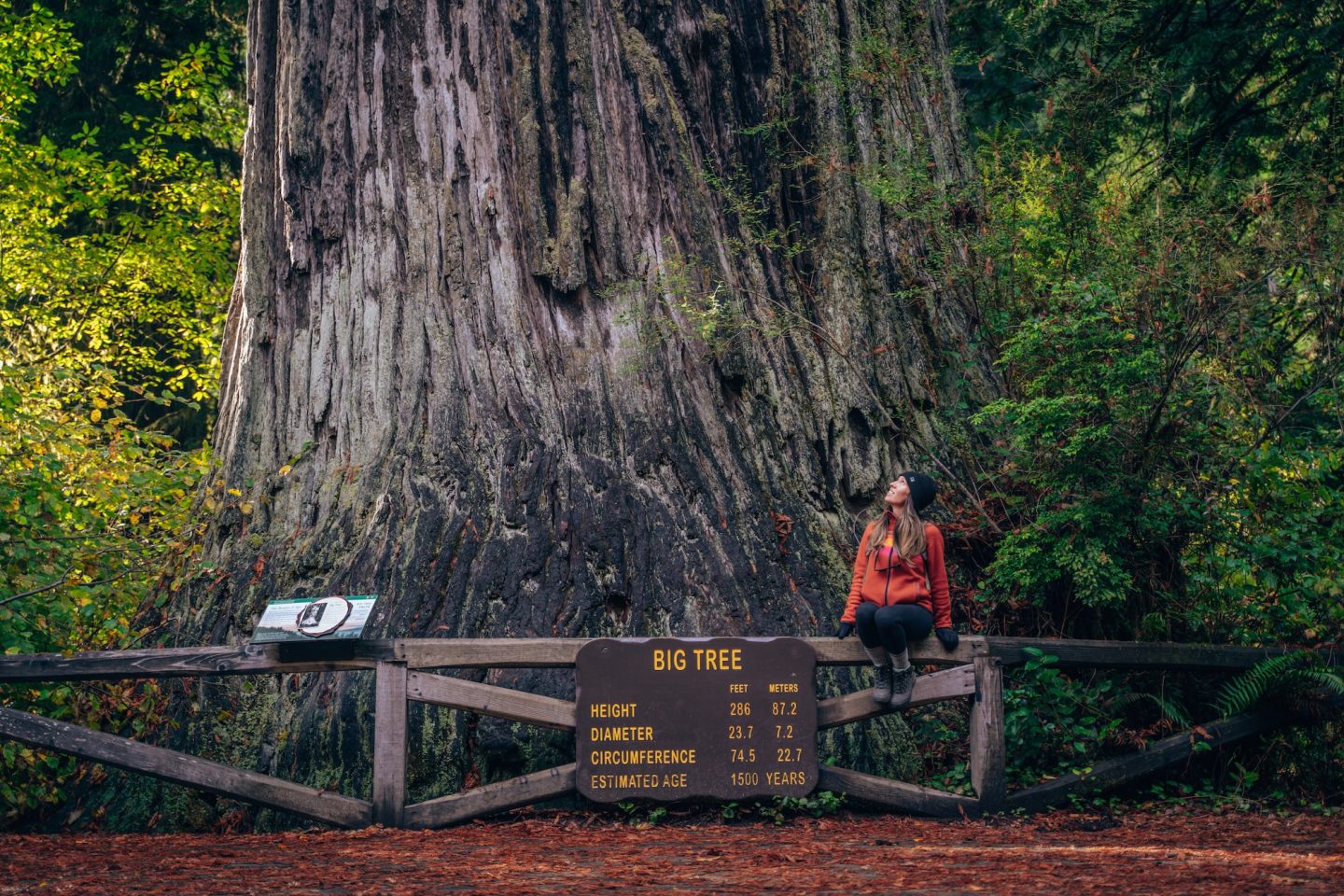
For a full list of things to do in Redwood National Park, check out our 10 MUST-DO ACTIVITIES IN REDWOOD NATIONAL PARK AND STATE PARKS article!
PLACES TO STAY IN THE REDWOOD NATIONAL PARK
CAMPING IN REDWOOD NATIONAL PARK
Redwood National and State Parks offer four main campgrounds, each providing a unique way to immerse yourself in the park’s beauty. Jedediah Smith Campground, located in Jedediah Smith Redwoods State Park, is nestled among old-growth redwoods along the Smith River, making it ideal for scenic views and river access. Mill Creek Campground, near Del Norte Coast Redwoods State Park, is surrounded by second-growth forest and offers a quieter, more secluded experience. Both campgrounds are equipped with standard amenities like restrooms, picnic tables, and fire pits.
For a coastal experience, Gold Bluffs Beach Campground in Prairie Creek Redwoods State Park allows camping right by the beach, with easy access to the iconic Fern Canyon. Inland, Elk Prairie Campground is perfect for wildlife enthusiasts, offering the chance to spot Roosevelt elk grazing in nearby meadows. All campgrounds can accommodate tents and RVs, but some have size restrictions for larger vehicles. Reservations are strongly recommended, especially in the summer, as these sought-after spots fill up quickly.
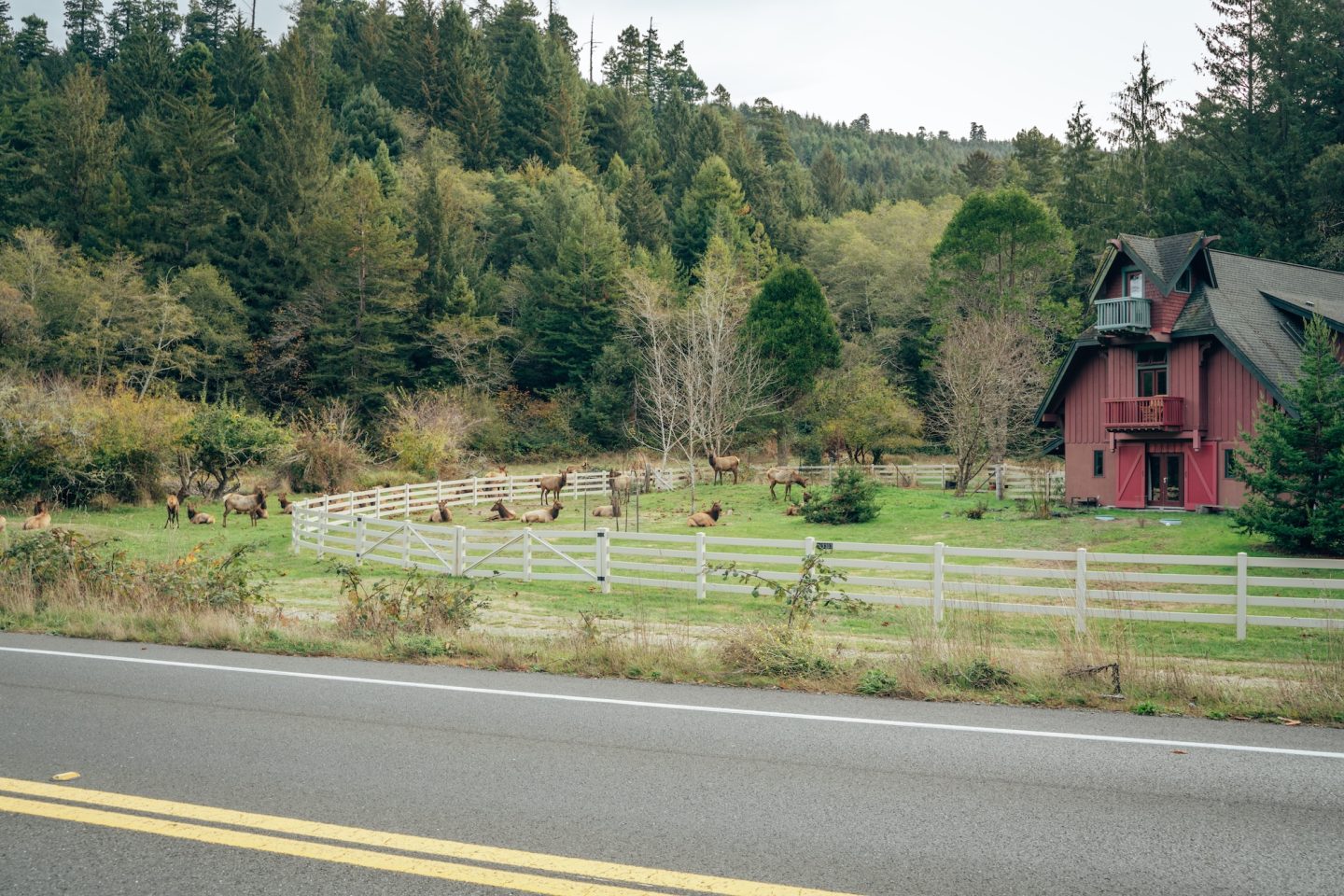
HOTELS NEAR REDWOOD NATIONAL PARK CALIFORNIA
While there are no hotels or lodges inside Redwood National and State Parks, nearby towns offer a variety of accommodations to suit different budgets and preferences. Crescent City, located just north of the parks, has numerous options, including chain hotels like Best Western Plus and locally owned motels. This coastal town provides convenient access to Jedediah Smith Redwoods State Park and popular spots like Crescent Beach. Further south, Klamath offers smaller, rustic inns and lodges, ideal for those seeking a quieter, more intimate stay close to nature.
Orick, situated near Prairie Creek Redwoods State Park, is a great base for exploring attractions like Fern Canyon and Elk Prairie. The town features cozy bed-and-breakfasts and rustic lodges that reflect the region’s natural charm. For a more luxurious experience, consider staying in Trinidad, about 30 minutes south of Orick. This quaint seaside town offers upscale inns, vacation rentals, and oceanfront accommodations with stunning views. Wherever you stay, book early during peak seasons to ensure availability.
OTHER PLACES TO STAY NEAR REDWOOD NATIONAL PARK
Alternatively, you’ll find a number of RV parks and Airbnbs in places like Trinidad, Orick and Klamath. We opted for this super cozy Klamath Riverview Airbnb. The location is perched on top of the main office of the RV park with a lovely river view. We were looking for a cozy location that was relatively central to all the parks that we could come home to each night, and this location more than suited our needs.
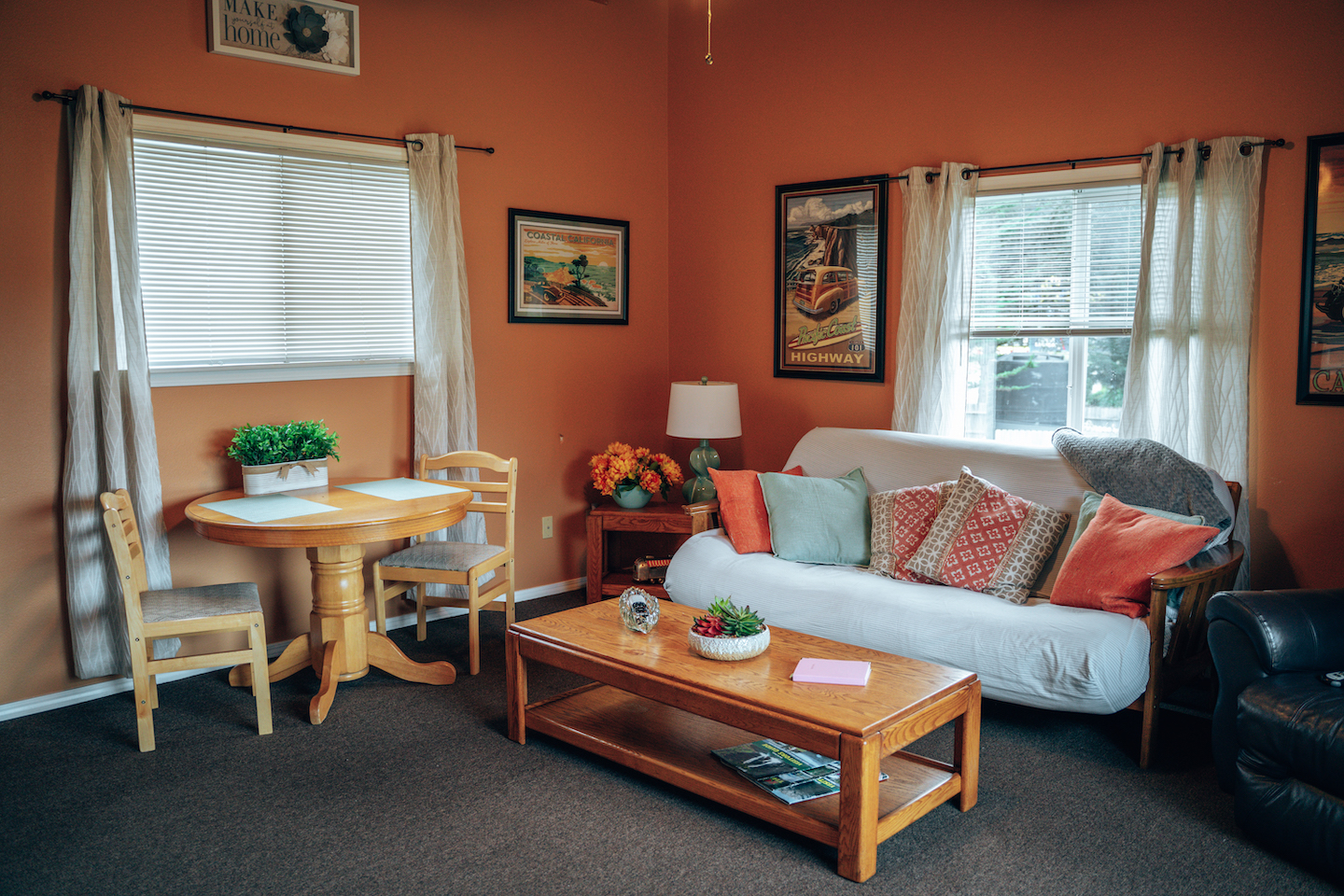

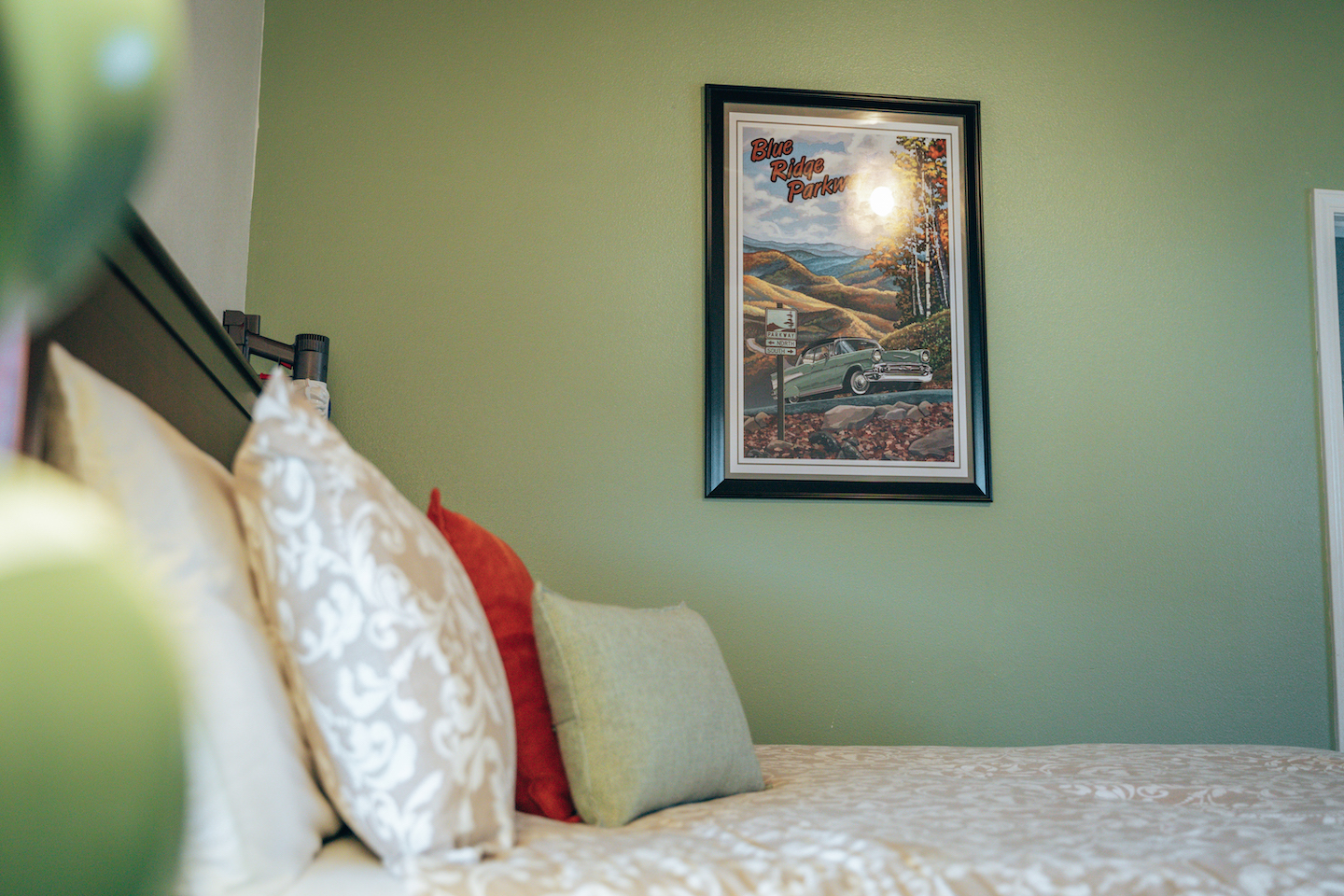

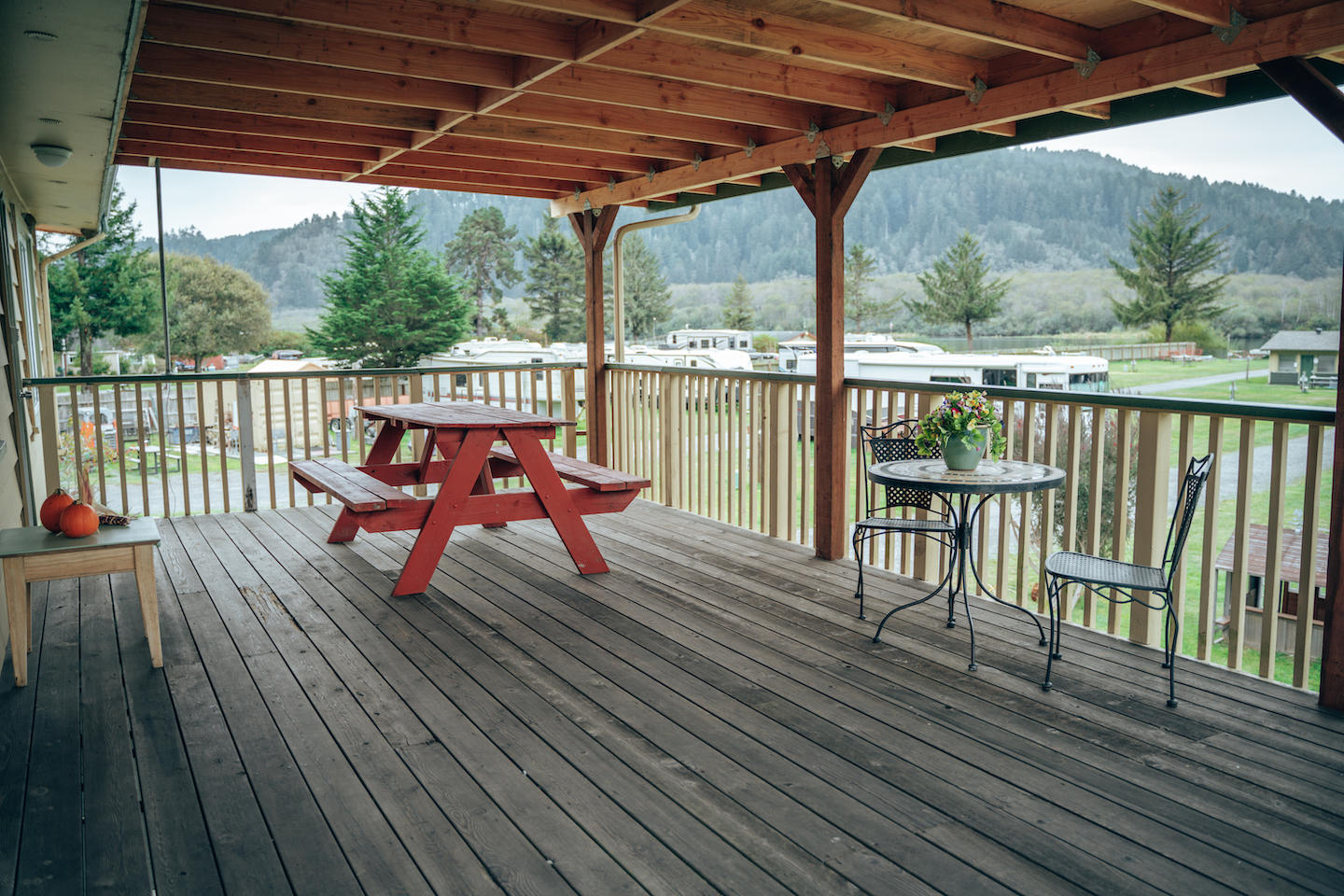
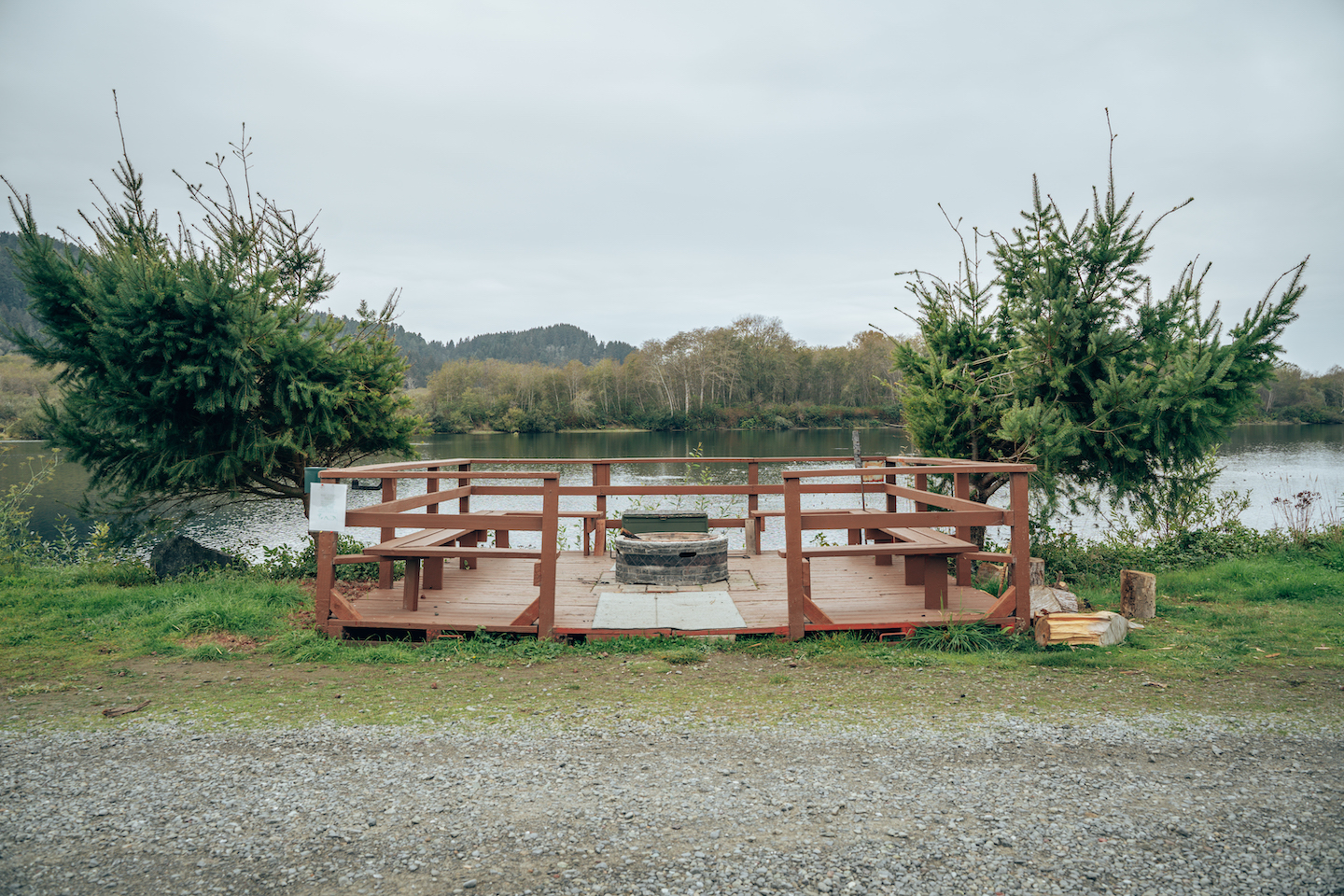
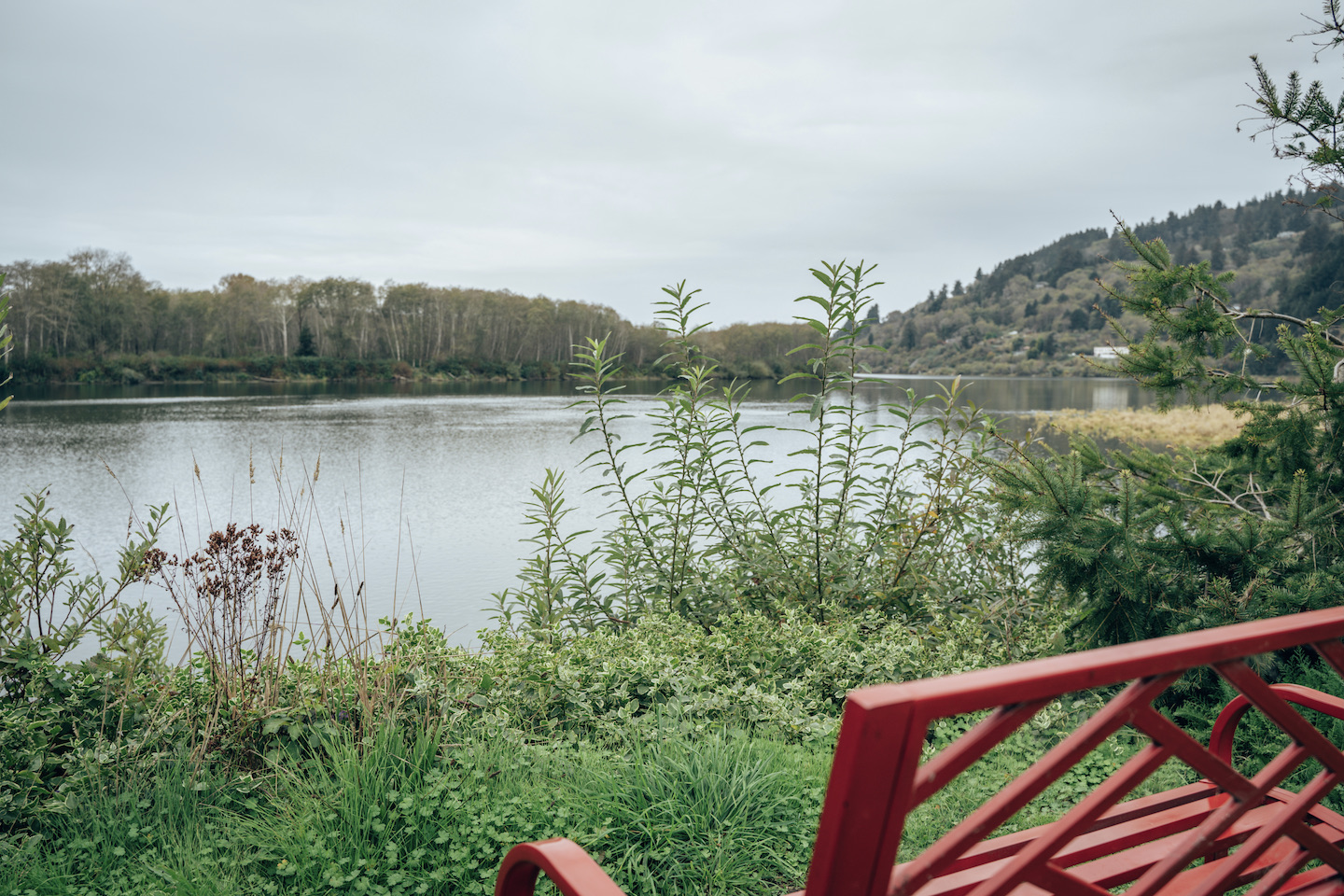
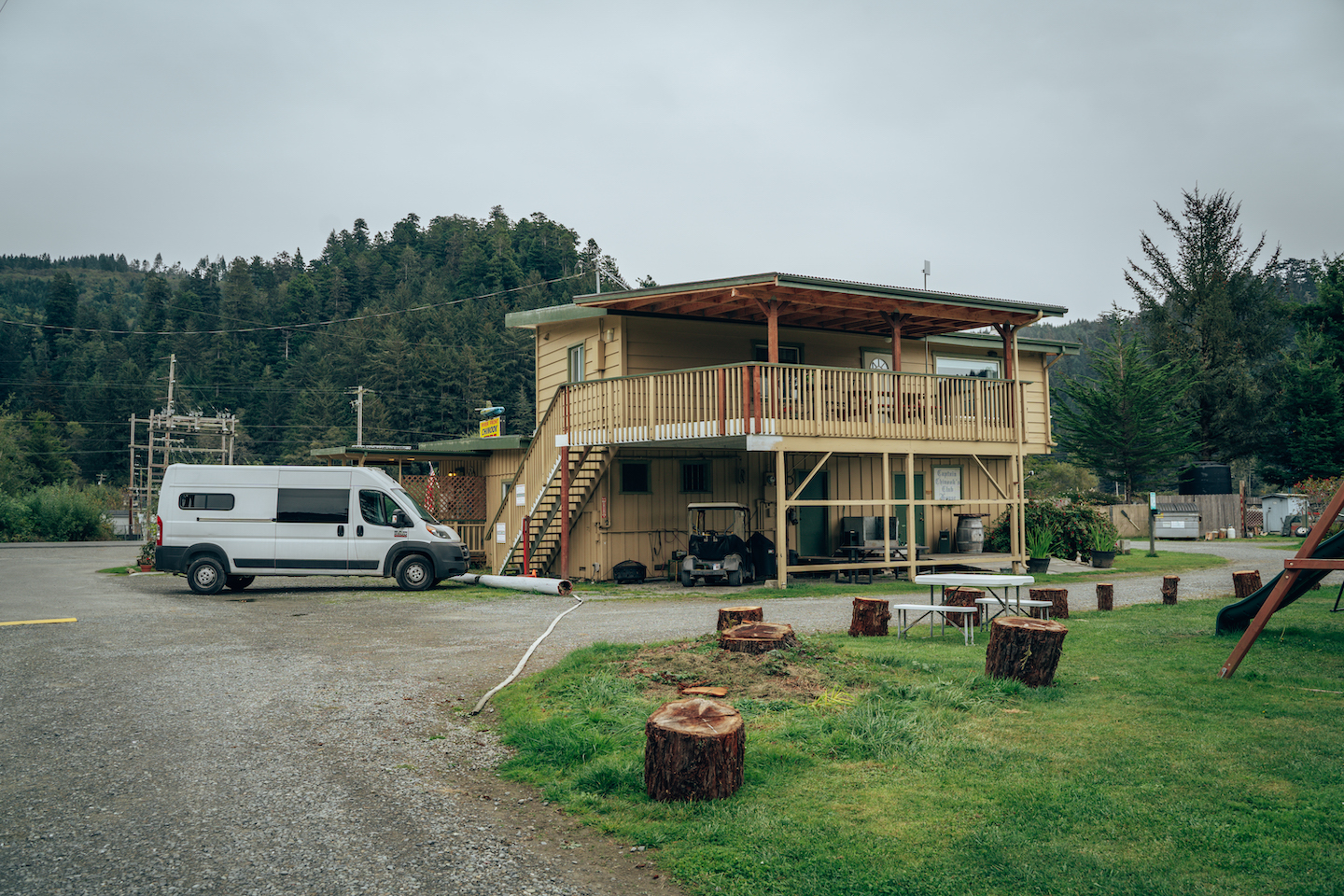
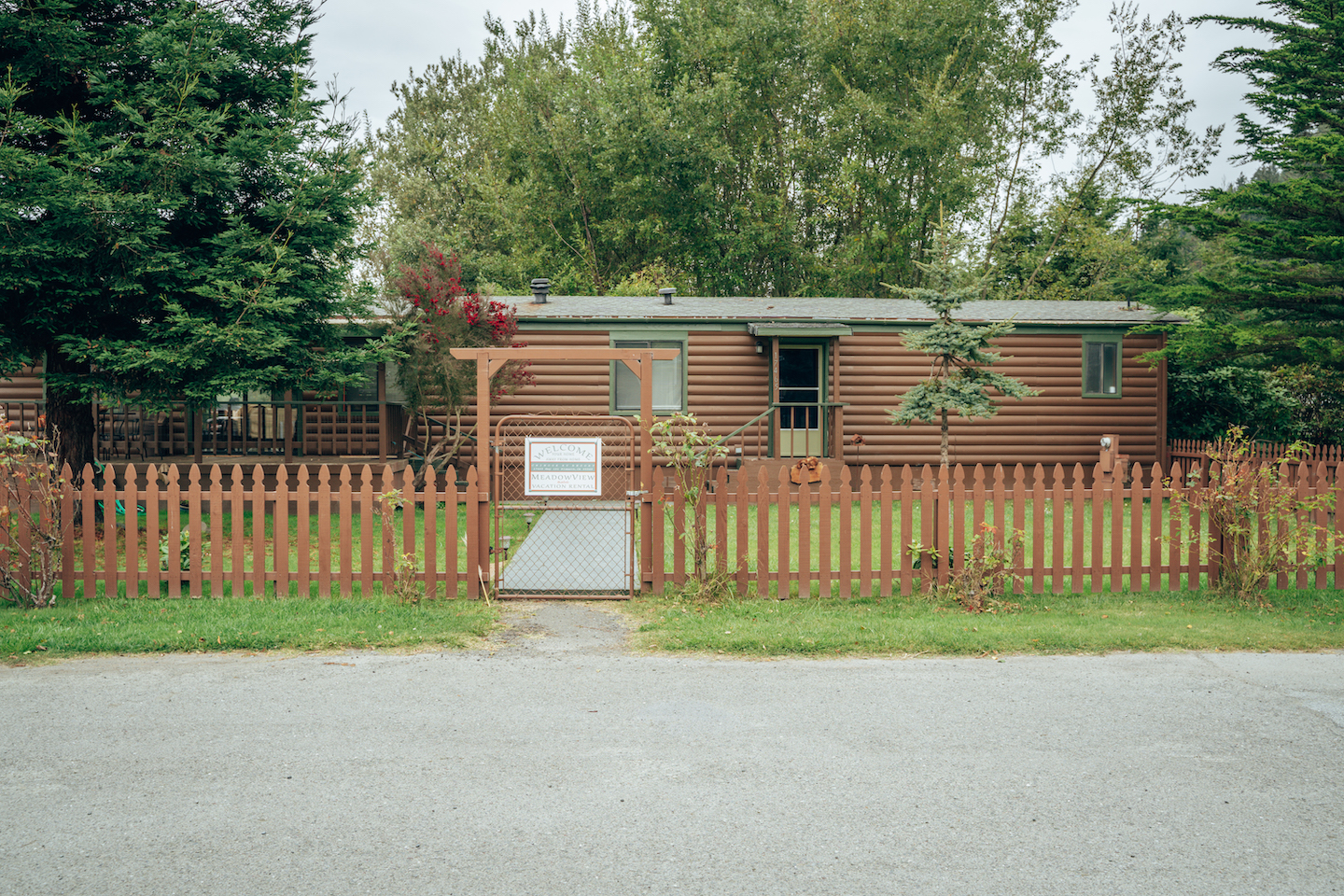
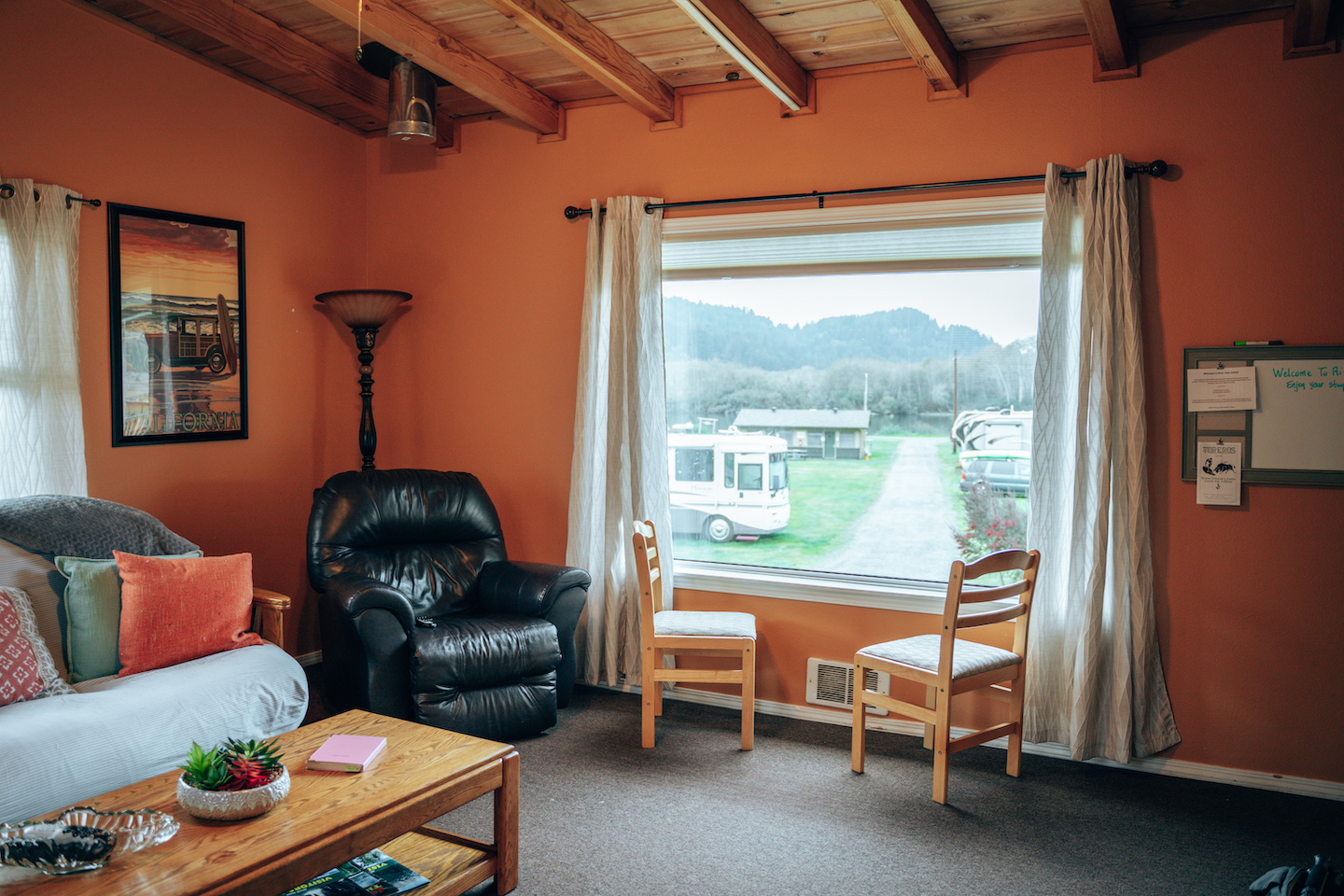
OTHER ARTICLES ABOUT REDWOOD NATIONAL PARK
- 10 MUST-DO ACTIVITIES IN REDWOOD NATIONAL PARK AND STATE PARKS
- ONE DAY IN REDWOOD NATIONAL PARK IN CALIFORNIA
- 15 PLACES IN CALIFORNIA TO SEE WILDLIFE
- 10 OF THE BEST PLACES TO VISIT IN CALIFORNIA IN WINTER
- 20 OF THE BEST FREE THINGS TO DO IN CALIFORNIA
MAP OF CALIFORNIA
Want to see ALL of the different things to do in Redwood National Park and State Parks in California? If so, this map is for you. Not only does our interactive map of California have ALL the details and location info for the activities in this article, but it also has over 500 other points of interest in California in it. With all of the location specific details and information like GPS location, dog-friendliness, cost, and more, as well as an itinerary creator, this map is the perfect trip planning companion.
REDWOOD NATIONAL AND STATE PARKS: HOW TO PLAN YOUR VISIT
Redwood National and State Parks are a haven for nature lovers, offering unparalleled experiences among the world’s tallest trees. Whether you’re hiking through ancient forests, camping under star-filled skies, or exploring scenic coastal vistas, this remarkable destination promises unforgettable memories. With proper planning—choosing the right season, accommodations, and activities—you can make the most of your visit. From towering redwoods to tranquil beaches, the parks’ timeless beauty will inspire and rejuvenate your spirit. Start planning today and prepare to be awed by one of California’s most extraordinary natural treasures.
We hope this helped give you some insight, and ultimately helps you plan your own visit to Redwood National and State Parks. If we missed anything, or you have any other recommendations, let us know below! And make sure to check out our 10 MUST-DO ACTIVITIES IN REDWOOD NATIONAL PARK AND STATE PARKS article!
And if you aren’t following us on Instagram, check us out there for daily California inspiration!
Thanks for stopping by! – Ryan & Katy
